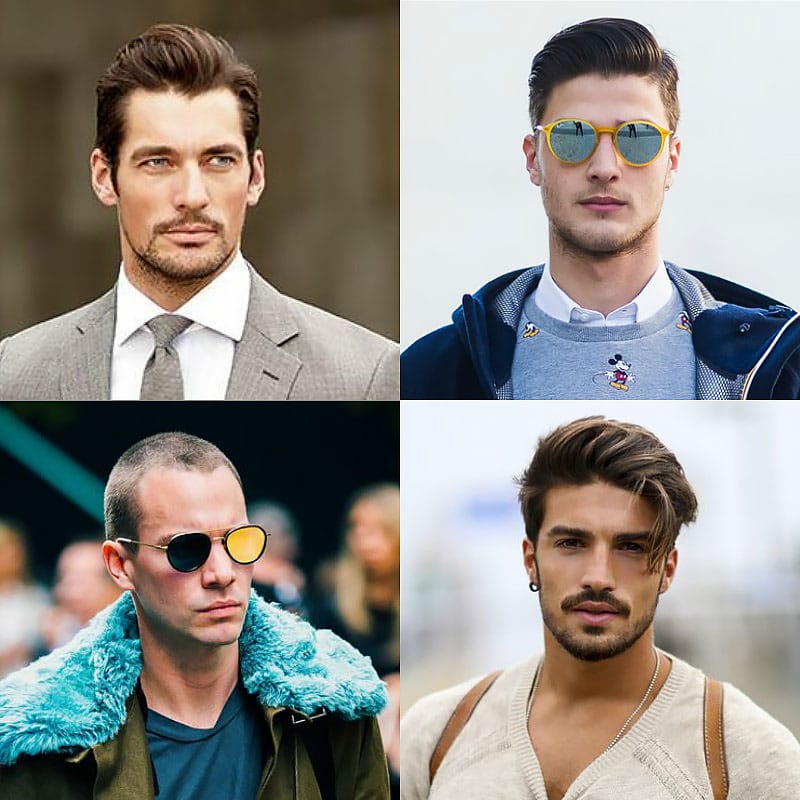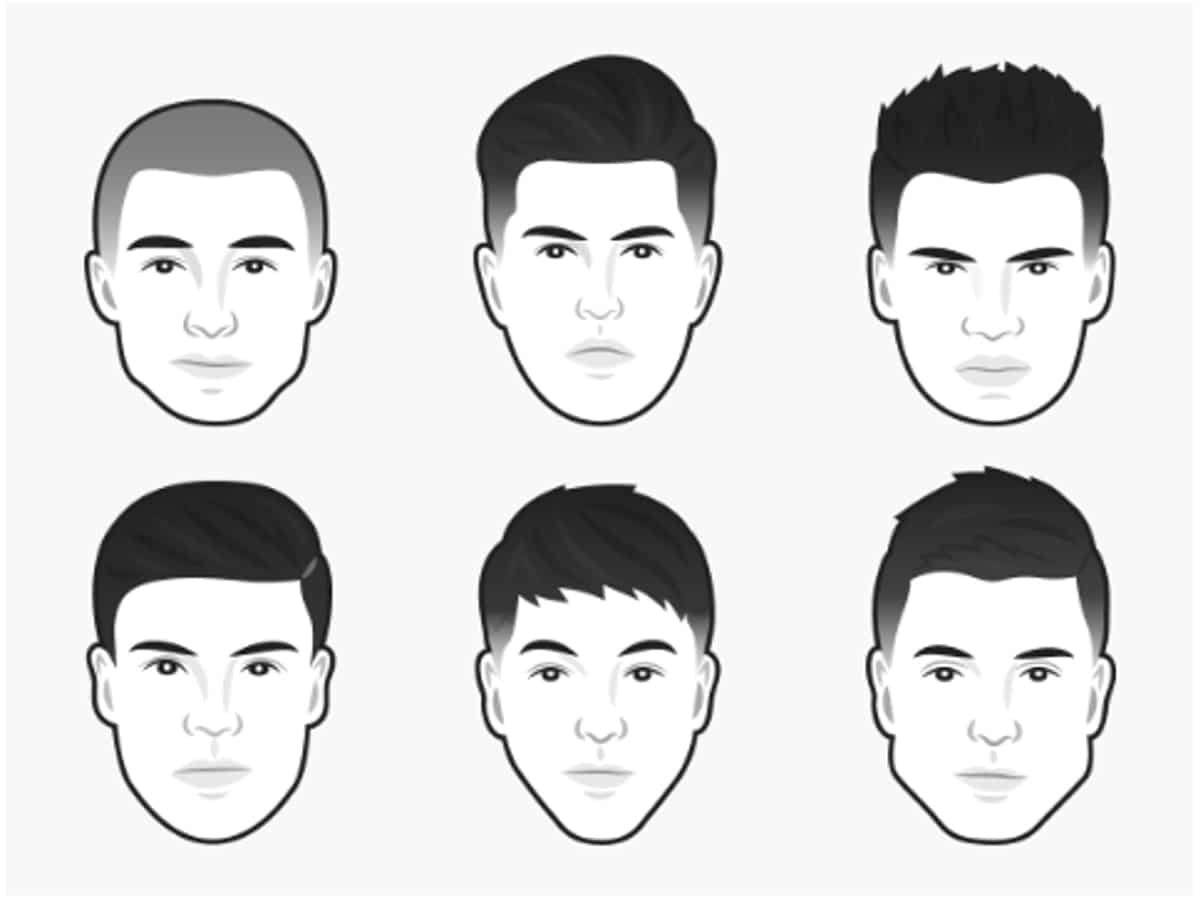What Hairstyle Fits Me Men

The selection of an appropriate hairstyle represents a pivotal aspect of personal presentation, significantly influencing an individual’s overall image, confidence, and how they are perceived. Far from being a trivial decision, the choice of a haircut is a nuanced process that requires careful consideration of various factors beyond mere aesthetic preference. A well-chosen style can enhance facial features, complement an individual’s professional and personal lifestyle, and project a desired persona. Conversely, an ill-suited style can detract from an individual’s appearance, creating an imbalance or an impression inconsistent with their intentions. This comprehensive guide explores the multifaceted considerations involved in identifying the most suitable hairstyle, providing a framework for informed decision-making that aligns with an individual’s unique characteristics and circumstances.
Understanding the Foundations of Hairstyle Selection
Determining the ideal hairstyle involves a systematic evaluation of several key elements. These elements interact to create a harmonious look that not only appears good but also feels authentic and manageable. The primary factors include face shape, hair type and texture, hairline characteristics, lifestyle demands, and the level of maintenance commitment an individual is prepared to undertake.
Face Shape: The Cornerstone of Compatibility
The shape of an individual’s face is arguably the most critical determinant in hairstyle selection. Different face shapes benefit from styles that either balance proportions, soften angularity, or enhance existing features.
- Oval Face: Often considered the most versatile, an oval face is characterized by balanced proportions, with the forehead slightly wider than the chin and a gently rounded jawline. Almost any hairstyle can be accommodated, from short and structured to longer, flowing styles. The objective is to maintain the natural balance without adding excessive height or width that could distort the inherent symmetry.
- Round Face: A round face features similar width and length, with soft, rounded edges and a lack of strong angles. The aim for this face shape is to introduce length and angularity to create the illusion of a more elongated profile. Styles that add height on top, such as a quiff or a textured crop, are beneficial. Shorter sides can also help to slim the face. Avoiding styles with excessive volume on the sides or a fringe that shortens the face is advisable.
- Square Face: Defined by a strong, angular jawline, a broad forehead, and roughly equal width and length, a square face projects a robust and masculine appearance. Styles can either soften these strong features or accentuate them. Softer, more textured styles with some length on top and sides can provide balance. Alternatively, very short, sharp cuts can enhance the defined jawline. Avoiding heavy, blunt fringes or styles that add too much width to the sides is generally recommended.
- Oblong/Rectangular Face: Longer than it is wide, an oblong or rectangular face can appear elongated. The goal is to reduce the perceived length and add width. Styles that have volume on the sides, such as a textured side part or a classic taper, are effective. Avoiding excessive height on top is crucial, as this can further lengthen the face. Fringes that fall across the forehead can also help to shorten the face visually.
- Heart Face: Characterized by a wider forehead and cheekbones that taper to a narrower, sometimes pointed chin, a heart-shaped face benefits from styles that balance the wider upper half with the narrower lower half. Styles with some length and volume around the chin area can help achieve this balance. A textured fringe can reduce the prominence of the forehead. Avoiding styles that add too much volume on top or very short sides that emphasize the width of the forehead is often suggested.
- Diamond Face: A diamond face features wide cheekbones with a narrower forehead and jawline. The objective is to soften the cheekbones and add width to the forehead and chin. Styles with some length on top and sides that can be swept back or styled with a fringe can work well. Volume at the temples or around the jawline can also help balance the proportions.
Hair Type and Texture: Working with Natural Attributes
Beyond face shape, the inherent characteristics of the hair itself play a crucial role. Hair type refers to its straightness, waviness, curliness, or coiliness, while texture describes the thickness of individual strands (fine, medium, thick) and the overall density of the hair.
- Straight Hair: This type allows for clean lines and structured styles. Precision cuts, fades, and styles that emphasize a neat part are often suitable. The challenge can be a lack of natural volume, which can be addressed with strategic layering or specific styling products.
- Wavy Hair: Wavy hair offers natural movement and texture. Styles that embrace this natural flow, such as longer, layered cuts or textured crops, are often ideal. The key is to enhance the waves without allowing them to become unruly.
- Curly Hair: Curly hair possesses inherent volume and bounce. The focus for this hair type is often on managing volume, defining curls, and preventing frizz. Longer styles that allow curls to form naturally, or shorter, well-layered cuts that control bulk, are frequently chosen.
- Coily/Kinky Hair: This hair type is characterized by tight, dense coils. Hydration, protective styling, and shaping are paramount. Styles range from very short, shaped cuts to longer, more voluminous styles that celebrate the natural texture.
- Fine/Thin Hair: For fine or thin hair, the objective is to create the illusion of fullness and volume. Shorter cuts, strategic layering, and styles that are not too heavy can be effective. Avoiding excessive length that can weigh hair down is often recommended.
- Thick/Dense Hair: Thick hair offers abundant styling possibilities but can also be prone to excessive volume or heaviness. Styles that incorporate weight reduction through layering or texturizing can manage bulk, allowing for more controlled and versatile looks.
Hairline Characteristics: A Practical Consideration
The natural hairline also influences style choices. A receding hairline, for instance, might benefit from styles that are swept forward, textured, or shorter on the sides to de-emphasize the recession. A strong, even hairline offers greater versatility. A widow’s peak can be incorporated into a style or subtly hidden, depending on the desired aesthetic.
Lifestyle and Profession: Practicality Meets Presentation
An individual’s daily routine and professional environment should significantly influence hairstyle selection.
- Corporate/Formal Settings: Often necessitate neat, conservative, and easily maintained styles that project professionalism. Classic cuts, clean fades, and well-groomed side parts are common choices.
- Creative/Casual Environments: Allow for greater freedom and expression. Longer, more textured, or unconventional styles might be perfectly acceptable and even desirable.
- Active Lifestyles: May require shorter, low-maintenance styles that remain neat during physical activity and are quick to wash and dry.
Maintenance Commitment: A Realistic Assessment
The time and effort an individual is willing to invest in their hair are crucial. Some styles require daily styling, specific products, and frequent trims to maintain their shape, while others are inherently low-maintenance. A realistic assessment of this commitment prevents frustration and ensures the chosen style remains a source of confidence rather than a burden.
The Importance of a Well-Chosen Hairstyle
The benefits of a carefully selected hairstyle extend beyond mere aesthetics. It plays a significant role in fostering self-confidence, enhancing professional credibility, and facilitating personal expression. When an individual feels good about their appearance, this positively impacts their interactions and overall well-being. A hairstyle that harmonizes with facial features and personal style creates a cohesive and polished image, conveying attention to detail and a sense of self-awareness. It can be a powerful tool for non-verbal communication, subtly signaling professionalism, creativity, or approachability.
FAQs
Q: How often should hair be cut to maintain a specific style?
A: The frequency of haircuts depends on the style’s length and structure. Shorter, more structured cuts like fades or crops typically require trims every 2-4 weeks to maintain their sharpness. Longer styles might only need a trim every 6-8 weeks to remove split ends and maintain shape.
Q: Can hair texture change Natural Hairstyles For Medium Length 4B Hair A Comprehensive Guide To Embracing Texture over time? A: Yes, hair texture can change due to various factors including age, hormonal shifts, diet, environmental influences, and even certain medical conditions or treatments. What was once straight might become wavy, or vice versa.
Q: Is it possible to completely change a hair type?
A: While styling techniques and products can temporarily alter the appearance of hair (e.g., straightening curly hair), the fundamental genetic hair type cannot be permanently changed. Hair grows from follicles, and their shape determines the hair’s natural curl pattern.
Q: What role do styling products play in maintaining a look?
A: Styling products are essential for achieving and maintaining many hairstyles. They can add volume, define texture, provide hold, reduce frizz, and protect hair from environmental damage. The correct product selection is crucial for the desired outcome.
Q: Should current trends always be followed when choosing a hairstyle?
A: Current trends can offer inspiration, but they should not override what genuinely suits an individual’s face shape, hair type, and lifestyle. A truly effective hairstyle is one that complements the individual, regardless of fleeting fashion trends.
Tips
- Consult a Professional Stylist: A skilled barber or stylist possesses the expertise to assess face shape, hair type, and offer tailored recommendations. Their professional insight is invaluable.
- Bring Reference Photos: Visual examples communicate desired aesthetics more effectively than verbal descriptions. Photos can guide a stylist toward understanding specific preferences.
- Consider a Gradual Change: For those contemplating a significant style alteration, a gradual transition can allow for adaptation and assessment of suitability before committing to a drastic cut.
- Invest in Quality Products: Using appropriate, high-quality shampoos, conditioners, and styling products designed for a specific hair type and style is crucial for hair health and appearance.
- Learn Basic Styling Techniques: Understanding how to properly dry, brush, and apply products can significantly impact the daily success of a chosen hairstyle.
- Be Open to Experimentation: Finding the perfect style can sometimes involve a process of trial and error. An open mind to different looks can lead to discovering an unexpectedly flattering option.
Conclusion
The journey to identifying the most suitable hairstyle is a thoughtful process, deeply rooted in understanding individual characteristics and preferences. By meticulously considering face shape, hair type, lifestyle, and maintenance commitment, an individual can make an informed decision that transcends fleeting trends. A well-chosen hairstyle is more than just a cut; it is an integral component of personal identity, a source of confidence, and a powerful statement of self-awareness. Its profound impact on personal presentation underscores the importance of a deliberate and considered approach to this fundamental aspect of grooming.
 Men What Hairstyle Fits Me Men](https://i.ytimg.com/vi/7IedLlCV0nM/maxresdefault.jpg)






More suggestion: Short Layered Hairstyles With Volume An In Depth Exploration Of Dynamic Dimension